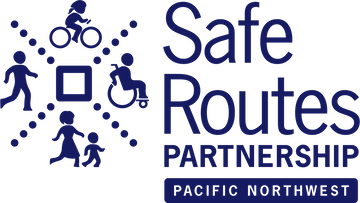Funded SRTS projects will be coming to a Portland school near you very soon!
Portland's Safe Routes to School program (SRTS), established more than 10 years ago, works to improve conditions for walking, biking, and rolling around schools. Housed within the City of Portland's Bureau of Transportation (PBOT), Safe Routes uses infrastructure improvements (such as crosswalks) and educational campaigns to improve safety, reduce congestion, and encourage physical activity. SRTS currently serves more than 100 elementary, K-8, and middle schools in Portland, with plans to work with high schools in the future.
In 2017-2018, our Pacific Northwest Senior Policy Manager, Kari Schlosshauer, participated in Portland's SRTS Stakeholder Advisory Committee (SAC), where she supported equitable outcomes and worked to ensure safety projects would be prioritized for the city's most disadvantaged students and neighborhoods. Portland's SRTS team worked with school communities to identify opportunities to make efficient investments that support students and families in walking to school in neighborhoods throughout the city. The primary charge for the SAC was to help prioritize a list of potential projects, and provide advice and direction to inform creation of the SRTS Strategic Plan.
The goals of this project planning included:
1. Identify Primary Investment Routes leading to every permanent public elementary, K-8, and middle school campus in the city of Portland
2. Develop a prioritized list of infrastructure projects to improve safety and walking access along the Primary Investment Routes
3. Prioritize projects to be built in the near term with current funds available through Fixing Our Streets
Over 1,200 projects identified by this process were prioritized for current funding with guidance from our Stakeholder Advisory Committee (SAC). Equity, safety, and student/route density were the data values used to prioritize the project lists. The selection of projects then chosen for immediate funding availability:
- Equity:
o Low-income households
o Communities of color
o Limited English Proficiency households
- Safety:
o Speed limit
o Number of traffic lanes
o Whether the street is on the Vision Zero High Crash Network, where more than half of deadly and serious injury crashes occur in Portland
- Student/route density:
o Percentage of students living within 0.5 and 1 mile of school
o Number of schools served by the project
Check out the resulting SRTS Project Planning website at SafeRoutesProjects.com.


